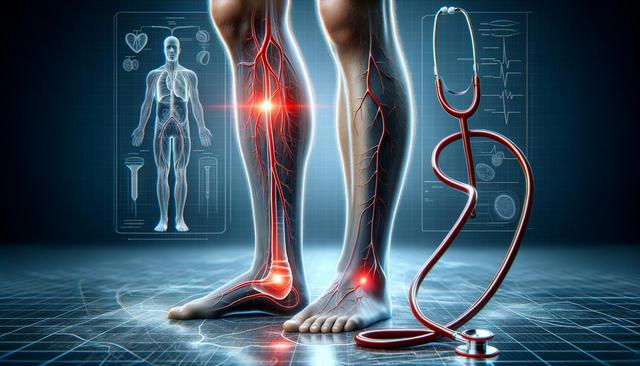Recognizing the Early Symptoms of Blood Clots in the Leg
Blood clots in the leg, medically known as deep vein thrombosis (DVT), can develop silently and become life-threatening if not detected early. Understanding the early symptoms is crucial to ensure timely intervention. One of the most common early signs is swelling in one leg, particularly around the calf or thigh. This swelling is often accompanied by a persistent ache or cramping sensation. The skin in the affected area may feel warm to the touch and appear reddish or bluish. Another symptom to watch for is tenderness or pain that worsens when standing or walking.
It’s important to consult a healthcare provider if you experience:
- Unexplained leg swelling
- Localized pain or cramping in one leg
- Skin discoloration or warmth
- A heavy or tight feeling in the leg
Sometimes, blood clots go unnoticed until they cause a more serious condition such as a pulmonary embolism. That’s why knowing the early symptoms of blood clots in the leg can be vital to preventing complications.
Natural Prevention Methods for Blood Clots
There are several natural ways to reduce the risk of developing blood clots. While these methods are not a replacement for medical treatment, they can support overall vascular health. One of the most effective approaches is maintaining regular physical activity. Movement improves blood flow and prevents stagnation in the veins, particularly in the legs. Simple actions like walking for 30 minutes daily or stretching during long periods of sitting can help.
Additional natural prevention strategies include:
- Staying hydrated to encourage healthy blood consistency
- Wearing compression stockings if you sit or stand for long hours
- Eating foods rich in omega-3 fatty acids, such as flaxseeds and walnuts
- Reducing intake of processed foods high in salt and sugar
Incorporating these lifestyle changes can significantly lower the likelihood of developing blood clots in the legs, especially for individuals with risk factors such as obesity, prolonged immobility, or a history of clotting disorders.
Effective Natural Treatments for Blood Clot Removal Support
Although confirmed blood clots require medical evaluation and treatment, certain natural remedies may support circulation and reduce clotting risk. Always consult a healthcare provider before using alternative treatments, especially if you are taking blood-thinning medications. Natural supplements and herbs have shown potential in promoting blood flow and reducing inflammation.
Some commonly used natural options include:
- Turmeric: Contains curcumin, which has anti-inflammatory and anticoagulant properties
- Ginger: May help reduce platelet aggregation and support circulation
- Garlic: Known for its cardiovascular benefits and potential to thin blood naturally
- Vitamin E: Plays a role in preventing platelet clumping
While these methods may offer supportive benefits, they should not replace prescribed treatments. Natural remedies work best as part of a broader health plan that includes diet, exercise, and medical supervision.
Medical Treatments and When to Seek Help
Medical treatment for blood clots in the leg varies depending on the severity and risk level. When early symptoms appear, timely diagnosis through imaging tests like ultrasound is essential. Doctors may prescribe anticoagulant medications to prevent the clot from growing and reduce the risk of future clots. In some cases, thrombolytic therapy or surgical clot removal may be necessary.
You should seek immediate medical attention if you experience:
- Sudden shortness of breath
- Chest pain or discomfort
- Coughing up blood
- Rapid heartbeat or dizziness
These symptoms may indicate a pulmonary embolism, a serious condition where the blood clot travels to the lungs. Early diagnosis and appropriate treatment can prevent complications and improve outcomes. If you are at increased risk due to surgery, pregnancy, or a sedentary lifestyle, discuss preventive strategies with your healthcare provider.
Daily Habits to Reduce Long-Term Risk of Blood Clots
Developing daily habits that support circulatory health can significantly reduce your risk of blood clots in the leg over time. These habits are especially important for individuals with a personal or family history of clotting disorders. Staying physically active is one of the most effective ways to keep blood flowing properly. Even short walks or light stretching throughout the day can help, especially during long periods of sitting or travel.
Other helpful habits include:
- Maintaining a healthy weight to reduce pressure on leg veins
- Limiting alcohol and avoiding tobacco, both of which can affect blood consistency
- Elevating your legs periodically to assist blood return to the heart
- Including circulation-boosting foods like leafy greens, berries, and citrus fruits
Monitoring your overall health and managing conditions like high blood pressure or diabetes can also lower the risk. When combined with awareness of early symptoms and natural prevention techniques, these habits can form an effective long-term plan to protect against blood clots.
Conclusion: Staying Informed and Proactive
Understanding the early symptoms of blood clots in the leg and adopting natural prevention and treatment methods can make a meaningful difference in your health. By recognizing warning signs early, incorporating lifestyle changes, and seeking medical guidance when needed, you can reduce your risk and support healthy circulation. Whether you’re managing personal risk factors or simply aiming for better vascular health, staying informed and proactive is key to prevention.






